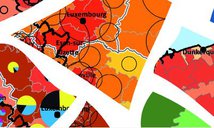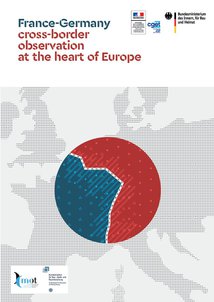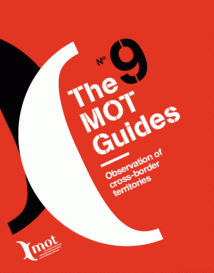Observation
Overview
The first initiatives
While earlier initiatives to cooperate in the area of observation were first of all developed at the level of cross-border regions (for example, in the Greater Region – Eurostat studies at the NUTS 2 or 3 levels), one-off initiatives were launched in the 1990s (the Trans-Jura Atlas, Atlas of the Pyrenees, etc.); but these were isolated initiatives with no immediate prospect of becoming permanent or regular. The setting in place of systematic local observation initiatives (with a high degree of geographical detail) really started to develop in the 2000s (Greater Geneva, Upper Rhine, Nord Pas-de-Calais/Belgium, etc.). They tended to proliferate in a disorganised fashion, hence the need for the creation of a network for these observatories, which was launched by the MOT, and the initiative embarked on with DATAR (now the CGET) in this area in the mid-2000s.
The first observation and mapping exercise for all of France’s borders at national level was carried out in 1999 by the MOT. This first map of flows of cross-border workers revealed the spectacular daily or weekly migration of hundreds of thousands of workers leaving France to perform a job in a neighbouring country (whereas only around 10,000 people were recorded in the opposite direction).
This exercise was carried out progressively as part of a cartographic collection and resulted in 2001 in the publication of the first “Cross-border Cooperation Atlas”, with a second edition in 2007. The concept of this publication, which appeared in both paper and electronic format, was to illustrate and comment on the dynamics at work along all of the borders of mainland France: flows, areas of cooperation, structuring of cross-border territories, etc.
In addition to this educational and academic objective, there was the political objective of raising the awareness of, and indeed alerting, the central authorities at both national and European levels to cross-border issues and the development and spatial planning challenges that arise from them.
The cross-border territory brings two different cultures into contact or sometimes constitutes a common cultural space through which the border runs.




